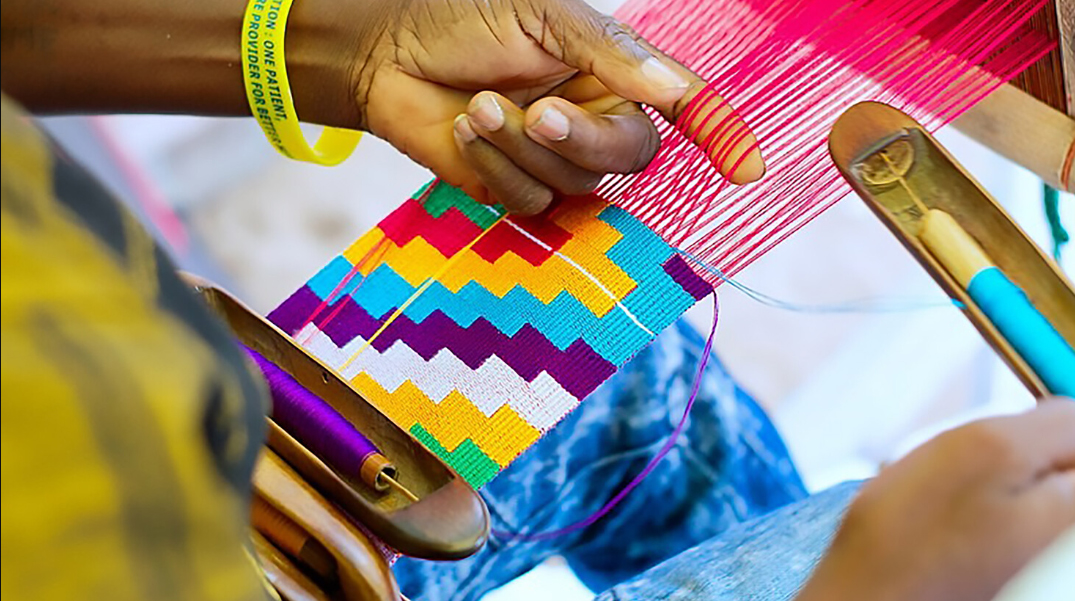
bonyadi magazine
Kente cloth, a vibrant and intricately woven textile, holds a special place in the cultural heritage of the Akan people of Ghana. This article explores the rich history, symbolism, and cultural significance of Kente cloth, shedding light on how this traditional fabric transcends its origins to become a global symbol of African identity and pride
Originating from the Ashanti people of Ghana, Kente cloth has a history that dates back centuries. Legend has it that two friends, Ota Karaban and Kwaku Ameyaw, inspired by the intricate patterns of a spider's web, created the first Kente loom. The resulting fabric was named "Kente," derived from the Akan word "kɛntɛn," meaning basket, reflecting the basket-like patterns that adorn the cloth
Each Kente design is laden with symbolism, representing various aspects of Akan culture and history. The colours used in Kente hold specific meanings; for example, black symbolises maturity and spirituality, red represents passion and strong political or spiritual feelings, and green embodies growth, vitality, and fertility. The intricate geometric patterns tell stories, convey proverbs, or depict historical events, turning Kente cloth into a visual language that speaks to the wearer's identity and the collective history of the Akan people. Kente cloth is more than a piece of fabric; it is a symbol of cultural identity and pride. Traditionally, Kente was worn by royalty and during special ceremonies, symbolising prestige, honor, and a connection to the spiritual world. Over time, Kente has evolved to become a versatile garment worn on various occasions, from weddings to academic ceremonies, and it is often used to make ceremonial stoles, known as "ntama," for academic achievements
Beyond its ceremonial use, Kente has become a powerful symbol of African identity and cultural pride. The cloth gained international recognition during the Pan-African movement in the 1960s and 1970s, when leaders and activists donned Kente as a symbol of solidarity with the African diaspora and a rejection of colonial influences. Today, Kente is embraced globally, worn not only by Africans but by people around the world as a celebration of African culture and a statement of cultural diversity and inclusivity
for
Kente cloth is traditionally handwoven on narrow horizontal looms. The weaving process is meticulous and requires great skill. Different colours of thread are carefully selected, and the weaver follows intricate patterns to create the desired design. The resulting strips are then sewn together to form the final cloth. The craftsmanship involved in Kente weaving has been passed down through generations, with master weavers often teaching apprentices the art of creating these intricate designs.
In the face of modernisation and globalisation, the traditional art of Kente weaving faces challenges. Industrialisation has introduced machine-made imitations, posing a threat to the authenticity and cultural significance of handmade Kente cloth. However, efforts are being made to preserve this ancient craft. Artisans and organisations in Ghana are working to promote traditional weaving techniques, support local weavers, and raise awareness about the cultural importance of authentic Kente cloth.
Kente cloth is more than a textile; it is a living embodiment of Akan culture and history. From its intricate patterns to its vibrant colours, Kente tells stories, preserves traditions, and symbolises the resilience of a people. As this iconic fabric continues to transcend its origins, reaching far beyond the borders of Ghana, it serves as a testament to the enduring power of cultural heritage and the importance of preserving the traditions that weave together the tapestry of human history. Whether worn during special ceremonies, celebrations of academic achievement, or as a symbol of cultural pride on the global stage, Kente cloth stands as a testament to the rich and diverse heritage of the Akan people and the broader African diaspora.










